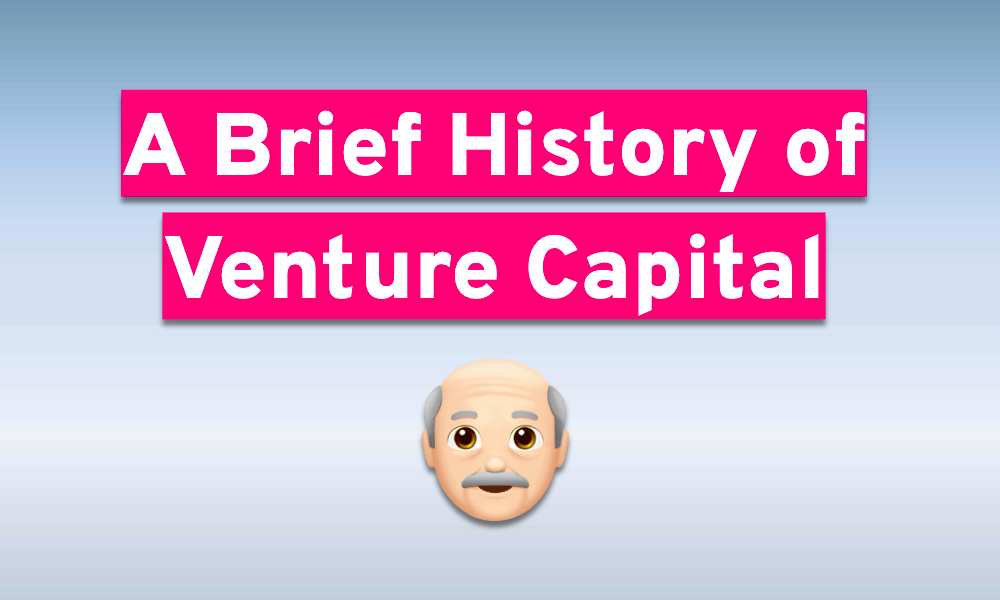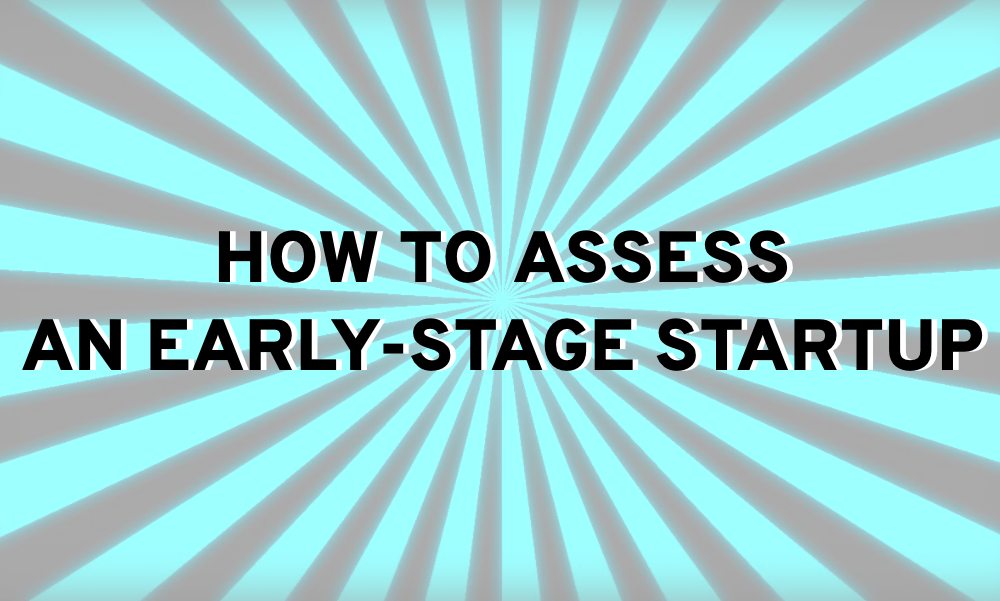Let’s face it. Startup ideas are a dime a dozen. Everyone these days seems to have the next great idea which will bring them fame and fortune. Spoiler alert, they won’t. Yet for those intrepid souls who persevere through the ideation phase of their startup, how does one get to the minimum viable product? How can you tell if your startup idea is validated?
We are teaming up with Kernal to address how to validate a business idea. Kernal allows you to take your startup idea from a napkin idea to an exit. It is a private community where you can not only build in public, but find users, investors, co-founders, and more. You can apply for access here.
Here we go.
Table of Contents
Startup Idea Validation
Startup ideas come from so many different sources that we wrote an entire article on it. But having a good idea is just the beginning. You will need to make sure that the idea itself can be validated and that you can actually build a minimum viable product around it.
In order for this to happen, you will need market validation.
According to Harvard Business School, market validation is the process of determining if there’s a need for your product in your target market. Why is this important? Because even the best business ideas are meaningless unless you can have customers at scale pay a price for your offering.
Without proper market validation, especially at the early stages, founders could waste their limited resources on pursuing a startup that leads nowhere.
The data supports this. Failory interviewed well over 100 startup founders who had failed. Their findings show that 34% of startups failed due to the lack of product-market fit.
These startups built a product for a market that didn’t need it or wasn’t willing to pay for it.
It is essential that you don’t make this mistake. This is precisely why we have included several startup idea validation frameworks and tools for market validation so that you can save time, money, and heartbreak.
1. Harvard Business School Market Validation
Harvard Business School offers five easy steps for market validation.
- Write Down Goals, Assumptions, and Hypotheses. The process of simply writing your thoughts down can lead to breakthroughs. Your goals can be defined, your assumptions examined, and your hypotheses tested. For example, what is the value of your product or offering? Why are you different in a crowded marketplace? What do you know about your business model? More importantly, what don’t you know? These may be difficult to answer but can save you time.
- Assess Market Size and Share. How big is your market? Is there room for you to enter and take a piece of it? Conduct market research and see what is possible for your endeavor.
- Research Search Volume of Related Terms. How can you tell if there is a need for your product or service? Simply see if your target customers are searching online for it. For example, Moz allows you to look up monthly searches for your product or service. This is an easy way to test your hypothesis to determine if there is a demand.
- Conduct Customer Validation Interviews. Talk to your potential customers. After all, they will have a general idea of what they want. Find out their needs, their problems, and their dream solution. Be open to feedback you receive.
- Test Your Product or Service. There is a reason companies have alpha and beta versions of their products. This is to eliminate any bugs and workout any problems before the product is released into the market. Furthermore, you will learn what is working and what isn’t.
2. Lean Market Validation
Jim Semick, co-founder of ProductPlan, created the lean market validation. While similar to the Harvard Business School methodology, the lean market validation process has more steps and is meant for rapidly testing a startup idea.
- Write down the product concept. Write down assumptions that you can easily go out and test.
- Decide. Get enough customer information and decide.
- Realize that most of what you write down are assumptions. What you write down are not facts. In fact, most of your assumptions won’t be used at all. The important part is to test your assumptions by getting started immediately.
- Find the truth by testing your assumptions. Test your assumptions with your ideal customer type. Use a landing page or run inexpensive ads.
- Start with your network. Use your network to reach your potential customers.
- Interview your customers. Learn about your customers' pain points. Be curious about what they need and what you will gain valuable insights.
- Ask, “Why?”. By asking why, you can get to the underlying reason behind a customer's motivation.
- Find the value proposition. This is extremely important. Why should the customer use your product or service? What does it help them do? Save time? Save money? Ease of use?
- Understand that liking your idea is not the same as buying your product. Understand that people may want to be a supporter of your product or are just being friendly and enthusiastic to help you. As I always say, everyone is a gangster until they have to pull out a credit card.
- Jump off the cliff and have fun. Take a chance on yourself and your idea. Have fun with the process.
3. The Startup Grind Methodology
Startup Grind has a wonderful framework for validation that doesn’t cost a single dollar.
- Write down the problem, not the solution. Write down the problem you want to solve. Try to keep it to a simple statement.
- Determine if the problem is tier 1. The problem you should be solving is one of the top problems your customers are facing. If the problem isn’t one of the most pressing, then don’t anticipate your customer to use it, let alone make a purchase.
- Determine existing solutions. When talking to your potential customers, ask how they handle the problem with the current solutions available. If there aren’t any solutions, that may be because there are too few people having this problem or the market doesn’t exist.
- Look for pain in existing solutions. What are the pain points when using specific solutions? What are they looking for to make their life easier? You need to have a unique benefit when it comes to your product compared to the competition.
- Verify there’s a budget for the solution. Examine your competitors. If they are growing, raising funds, or hiring, this is a good indication that customers are willing to pay for the product. Talk to your potential customers and see if they would pay for your product. Dig deep and find out why they would and more importantly, why they wouldn't.
- Use your prospects to define your roadmap. Your prospects can give you feedback on your offering as you build out your MVP. In the best case scenario, they can become your first paying customers.
4. Arnab Ray’s Startup Validation Framework
Entrepreneur Arnab Ray came up with a simple graphic for new startup validation. The goal of this framework is to provide a structured approach to founders that allow them to save on costs and analyze their ideas with the hope that they can understand the potential of their idea clearly. More importantly, the strengths, weaknesses, and risks are demonstrated.
You can also use his free tool to validate your idea here.
5. The Failory 4-Step Framework
Failory has a 4-step framework for validating business ideas.
- Define a pre-selling goal. What will validate your idea? How many sales will it take to convince you that the idea is validated? What is the time?
- Build a minimum viable offer. The minimum viable offer can be a variety of different things. For some, it is a simple landing page. For others, it is a functional prototype. And it could even just be an explainer video.
- Pre-sell your minimum viable offer. This can be done in a variety of ways. Leverage your audience via social media. Use forums and niche communities. Build in public. Guest post on blogs. Utilize Facebook and Google Ads. Whatever works best for you and your budget to get in front of your potential customers.
- Analyze the results. Did you achieve your goal? If so, then the idea is validated.You can move forward with your business. If not, then you should quit while you still can. Refund any sales and let your customers know what happened.
6. SPD Load’s Idea Validation Method
SPD Load provides a detailed framework for idea validating.
- Define the why. The first step is defining the problem, the customer, and the innovation.
- Set validation goals. How many potential customers approve of your idea? If you are pitching companies, how many will give you a clear idea of success? How many successful sales or pre-orders will be relevant to you?
- Formulate your hypothesis. What idea regarding your solution do you want to test? How can you prove it?
- Create your value proposition. What makes you special? What benefits will your customers receive from the use of your product? Keep it simple so you can obtain feedback.
- Validate. This could be everything from a single feature MVP to creating a landing page, blog, or explainer video.
- Collect feedback. Are your customers happy? Was the feedback helpful? Or were the results less than stellar? What worked? What didn’t?
- Decide. Depending on your feedback, you can either stick with it or pivot. If you are building a product that provides real value, then you are onto something. If it didn’t work, then the best choice may be to pivot and move on.
But how do you know if you are creating a product with real value? SPD Load also provides this handy checklist.
- The right time for this product.
- Having early adopters provide feedback.
- Empathy. Finding out what the customer wants via their feedback.
- Having a unique advantage over the competition.
- Complexity. Simply ask if you are making your customers' lives easier.
- Simplicity. The ability to explain your product in one clear sentence.
7. Venture Validator’s VV7D™ Framework
Venture Validator’s customer discovery framework walks startups through a series of seven steps, providing practical insights for product-market fit.
- Distill Key Details. Start by refining your startup’s value proposition, summarizing core concepts into concise, testable statements.
- Document Foundational Assumptions. Capture existing knowledge about the startup’s purpose, target audience, and pain points to inform survey design.
- Design Surveys for Maximum Signal. Create qualitative and quantitative survey questions, tuned to reduce noise and highlight actionable insights.
- Distribute Surveys to Target Customers. Ensure surveys reach the right audience while filtering out low-quality responses.
- Digest Data and Extract Insights. Clean and organize survey results, identify trends, and calculate key metrics like predictive product-market fit scores.
- Develop a Customer Profile. Based on survey insights, define the ideal customer and address objections they raise.
- Deliver Recommendations. Present a comprehensive report with clear next steps for pricing, product improvements, and customer targeting.
This framework emphasizes data-backed decision-making and iterative testing through customer discovery and feedback.
8. Mix and Match Approaches with Extracted
Each framework has its strengths—some founders prefer one over another—but the real power comes from blending the best of each.
For instance, you could take the problem statement and competitive analysis from 3: The Startup Grind and pair that with 2: Lean Market Validation to craft actionable assumptions. This combo can give you a much clearer view of your idea’s viability.
“You can’t manage what you can’t measure.”, Peter Drucker said. Conversely, you can’t measure what you can’t manage. During idea validation, structure is crucial. Customer interviews and experiment results must be organized, so you can easily spot pain points, uncover trends, and make informed decisions.
Extracted is a handy way to stay organized. It offers ready-made frameworks where you can log your experiments, record results, and keep track of customer interviews—all in one spot. It’s flexible enough to fit your own workflow, but it isn’t some AI that “magically” validates your idea. Think of it more like Notion, built specifically for idea validation.
PS: Extracted is part of the OpenVC Perks!

Bonus: Y-Combinator Startup School's Framework (Kevin Hale)
In a lecture for a part of YC's Startup School, YC Partner Kevin Hale discusses How to Evaluate Startup Ideas. While this slightly differs from the previous frameworks presented, this is a great resource for how founders should think about their startups
His key message revolves around thinking of startup ideas as hypotheses for growth. Hale breaks these hypotheses into three core components:
- Problem – Identify a meaningful problem that allows a company to grow rapidly.
- Solution – Position your product or service as the experiment within this context.
- Insight – Explain why this specific solution will gain traction and give the founders a competitive edge.
Hale emphasizes that founders should seek an unfair advantage to set themselves apart. These advantages could include:
- Unique Founders: Expertise or rare skills that position them as the best fit to solve the problem.
- Market Growth: Focusing on markets growing at 20% annually.
- 10x Product Advantage: Offering a product significantly better than competitors.
- Word-of-Mouth Acquisition: Prioritizing organic growth strategies over paid acquisition.
- Monopoly Potential: Creating network effects that make the business stronger as it scales.
Put Your Business Idea to the Test
Although all seven validation frameworks we shared were different, they had common trends. When validating your startup idea, it is essential to write down your goals, have a relationship with your customer, experiment, and constantly listen to feedback to improve your offering. Communities like Kernal are great places for validation. Founders have access to thousands of people who can provide feedback, guidance, and even the first sales.
We hope this article sets you on the path to validating your idea and arriving at not just an MVP, but a successful MVP that will be useful to your customers.
Find ideal VCs for your startup today 🚀










